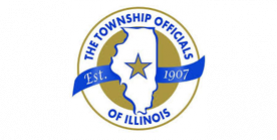Blog

Smart Grid
What Is A Smart Grid?
In the United States we enjoy and often take for granted the reliable flow of electricity from generator to consumer through a series of interconnected power grids. Many of those grids were designed decades ago and have been expanded over time. The major design criteria were reliability, redundancy and minimizing the impact on the environment. Well times have changed and so must the grids that deliver our power. For more than 60 years, demand for electricity has grown and the nature of devices requiring electricity has changed dramatically. Our grids were designed well before the advent of microprocessors and wireless communications and are now in need of an overhaul to effectively communicate with modern-day electrical loads and to effectively utilize modern-day technology. Furthermore, our grids were designed before the emergence of renewable energy sources and an era of deregulated customer choice. We are now attempting to transform a grid that was designed solely for reliability, into one that will also support commerce as well. Simply stated, a smart grid is designed to integrate modern technology into the power grid so that end-use consumers will have more control over their energy consumption. Gaining information about real-time energy prices and the ability to adjust consumption provides a myriad of benefits to both suppliers and the consumers.
Utility Involvement
At the moment, electric utilities are handling the grid's shortcomings as best they can. The methods available, however, are less than ideal. When demand for power spikes, utilities are sometimes unable to supply all the electricity needed. To avoid blackouts or brownouts they turn to options such as: turning on backup coal and oil plants that are very expensive to operate, coordinating with other utilities to allow for more electricity flow where it is needed or making public appeals to turn off electrical loads.In a smart grid configuration there would be many small monitoring stations watching sections of the grid (micro grids). This would break the grid into smaller pieces and allow for better and more in-depth analysis of what is happening on a real-time basis. With better analysis of where power is being used and when, it becomes easier to coordinate production to get electricity where it is needed. This helps hold down costs and can send price signals to consumers encouraging them to alter their consumption patterns in times of high prices. With so few utilities responsible for so much service territory area, providing reliabile service is always a concern. For utilities it is often difficult to identify and isolate only the small affected area of the grid when a problem occurs. Therefore, during a power outage, often an area much larger than necessary is taken out of service until the problem source is identified. In many cases, a utility does not even know about an outage until someone calls to report the problem. A smart grid uses technology to quickly identify, isolate and help restore power where needed.
Consumer Opportunities
The efforts of utilities alone will not accomplish the objectives of a smart grid. The end-use consumer must be able to see price signals in real time and then be incentivized through rate plans to reduce or shift his/her consumption pattern. An important innovation to support this behavioral change is the smart meter. Unlike a "normal" electric meter which simply sums our monthly energy consumption, a smart meter records electricity use at all times of the day and documents that data. With a smart meter providing more detailed information, utilities will be able to offer new billing options that better match usage with the true cost to serve at the time of usage. Currently utilities know the times when electric consumption reaches its peak and they spread those high-cost periods out over a large customer base; regardless of when a particular customer was consuming energy. In this scenario, a consumer lacks the information needed and a financial incentive to adjust his use of electricity.
A smart grid is an innovative cooperation between electricity suppliers and their customers. Consumers are given the knowledge and technology to adjust their electricity consumption, which is financially beneficial for them. This in turn lessens peak demands for electric utilities, which means new power plants do not have to be built and expensive plants can be used less often. Even though wholesale electricity prices change hourly, retail consumers pay electricity rates that are based on average electricity costs. This means consumers don't see the changes in wholesale prices and don't have the opportunity to react to them. Without this information, consumers have no incentive to reduce their usage when prices are high.
Until we are able to supply real-time price information to end users, we will never approach the potential of a smart grid. In the meantime, a manual process requiring human intervention (until technology can do this for us) has been developed in many areas of the country. This process is known as Demand Response. Demand Response allows agents of consumers, known as Curtailment Service Providers, to see wholesale price information and to coordinate consumption reductions for their clients. Participating consumers then receive money from an Independent System Operator, like PJM, for voluntarily reducing their loads in times of peak demand and high prices. This lets the customers respond to wholesale prices, and enhances efficiency by linking the price of electricity and the value consumers place on it. Allowing consumers to see wholesale prices and react when the prices are high can minimize the impact of price spikes. It can also reduce the need for expensive peaking generating capacity and help hold down prices overall. At the very least, demand response can provide relief for our overloaded transmission system and reduce the need for infrastructure.



